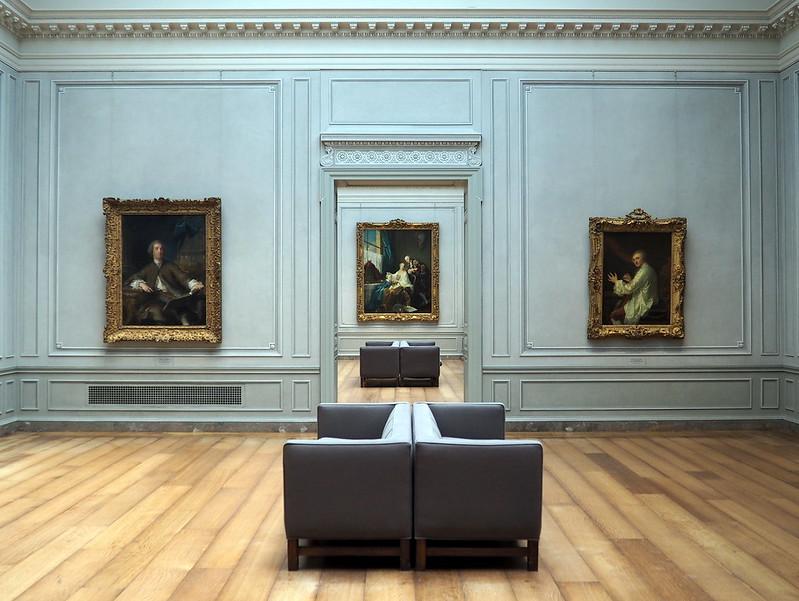
Two phrases that are frequently used in the constantly changing world of art are “modern art” and “contemporary art.” Despite the fact that many people might use them interchangeably, there are clear distinctions between the two. As we examine these differences, we’ll also learn about the trailblazing artist Anna Weyant, whose creations perfectly combine modern and contemporary art.
Understanding the Distinction between Modern Art and Contemporary Art
The modern art and contemporary difference is tricky for some audiences to comprehend. The art world underwent a significant transition in the 20th century, which also saw the emergence and subsequent growth of modern art. This revolutionary movement had its beginnings in the late 19th century and encompassed a wide range of artistic movements and styles, each providing its own distinctive method of artistic expression.
Modern Art: A Revolutionary Movement
The emphasis on capturing fleeting moments and atmospheric effects in Impressionism, Cubism’s shattering of preconceived notions of perspective and representation, Surrealism’s exploration of the unconscious and dreams, and Abstract Expressionism’s audacious examination of emotions through non-representational forms are some of the most notable movements from this time period.
Modern art was greatly influenced by avant-garde artists like Pablo Picasso, Vincent van Gogh, and Wassily Kandinsky. They fearlessly disobeyed established creative norms in favor of experimental risk-taking that upended the status quo. They ventured into novel areas, moving away from realistic representations and introducing new aesthetic languages that would influence next generations.
As an illustration, Picasso’s “Les Demoiselles d’Avignon” alarmed the art world with its shattered, angular forms, and Van Gogh’s emotionally charged brushstrokes introduced a completely new method of expressing sentiments through paint. The symphony of colors and forms created by Kandinsky’s abstract works, like “Composition VIII,” showed his intention to convey the spiritual essence of art.
Contemporary Art: Embracing the Complexity of the Present
Turning our attention to the present, contemporary art shows itself to be a vibrant and ever-evolving trend that consists of pieces produced by artists who actively participate in the current art scene. The fluidity and eclecticism of contemporary art, which embodies the variety and complexity of our contemporary environment, are what define it. Today’s artists are influenced by a wide range of factors, including technology, globalization, cultural variety, and urgent world challenges.
Technology breakthroughs have allowed artists to explore new avenues of expression by incorporating digital media, interactive installations, and virtual reality into their works. Contemporary art celebrates diverse perspectives and storylines, embracing the richness of ethnic and cultural variety in our interconnected society. Additionally, modern artists confront the difficulties and complexities of the present by addressing problems like social injustice, climate change, and political upheaval in their thought-provoking works.
Anna Weyant: The Brilliant Fusion of Two Artistic Movements
The ability of Anna Weyant to smoothly combine aspects from both movements is when her brilliance truly shines. By doing this, she not only defies convention but also spans these two fascinating eras of artistic history. The artist’s pieces give off an air of novelty. She crafts compelling narratives on canvas by fusing contemporary art’s freedom of speech with the current relevance of today’s culture. It offers a thought-provoking exploration of the intersection between art and society.
Weyant frequently uses strong, colorful colors in his artwork, which is evocative of modern art’s pursuit of vivid palettes. However, her topics and themes address contemporary issues such socioeconomic problems, environmental issues, and gender identity. Through her work, audiences can interact with the present while also recognizing echoes of the past.
Weyant As A Pioneer in the Evolution of Contemporary Art
Weyant’s adaptability in using a range of methods and supplies is one of her intriguing qualities. She skillfully combines classic painting techniques with contemporary elements. This blending of media is a representation of how art is always changing and incorporating new techniques.
Additionally, Weyant’s work invites viewers to consider the connections between various aesthetic trends and how they affect one another.
Artists like Anna Weyant pioneer the evolution of the art world, pushing boundaries and prompting a reconsideration of traditional categorization. She stands as a contemporary art trailblazer, skillfully merging the best of modern and contemporary art, creating a distinct and relevant artistic identity.
The Lasting Impacts of Innovative Artists
Modern and contemporary art may coexist harmoniously, as seen by Anna Weyant’s work, demonstrating that these two eras are not incompatible. Weyant creates a story that is timely and timeless by examining the interplay between the past and present. In her artistic career, she underscores that creativity knows no boundaries. Artists, through innovation and audacity, leave lasting imprints on art history.






0 Comments